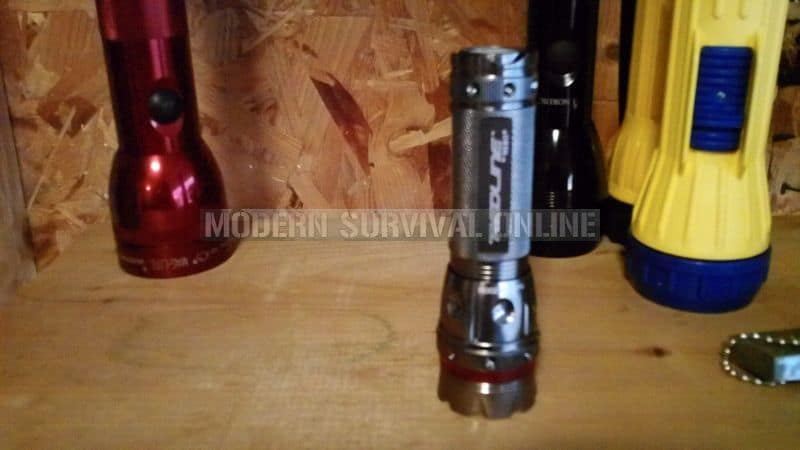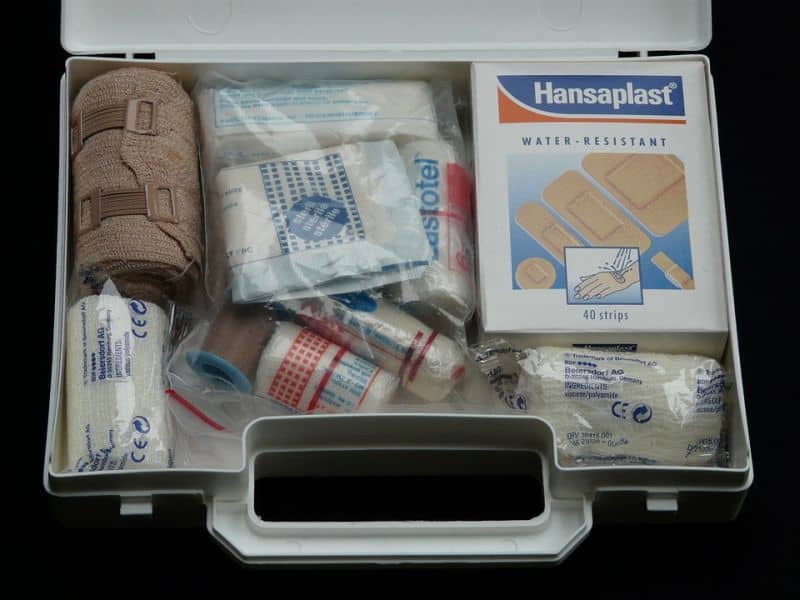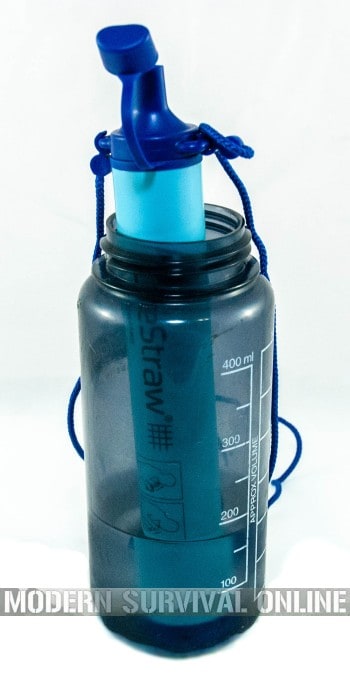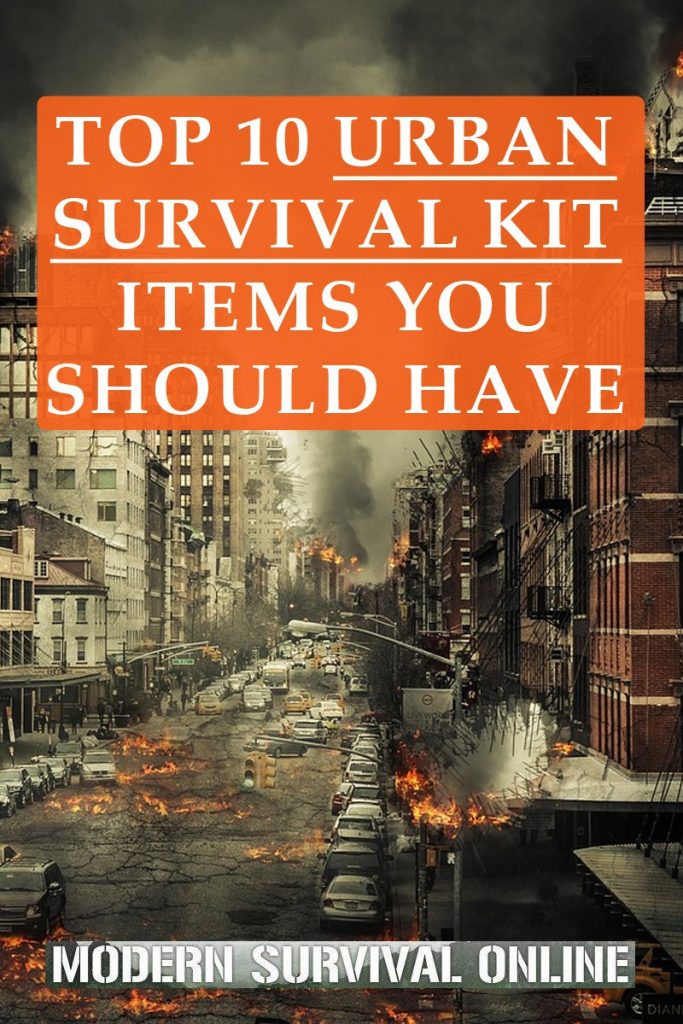Most survival priorities apply in any kind of environment you happen to be in. You’ll always need shelter, you always need food, water and a way to protect yourself.
Urban environments offer their own share of challenges, and many of them are the equal of some of the most hostile natural environments on Earth.
The concrete jungle can be a dangerous place in the best of times, and you can bet it’ll be even more dangerous in the middle of a SHTF situation.
If you are an urban dweller or just reside in a suburban neighborhood outside of a major city, it is in your best interest to have a survival kit that is specially adapted for the challenges you’ll face in the city.
You shouldn’t be lazy or take it easy just because you’re surrounded by all the trappings of civilization. You’ll still need the right survival supplies, and the know-how to use them.
In this article I’ll provide you with 10 must-have urban survival items to include in your kit.
Urban Environment Gear Selection
Setting aside the massive population difference for a moment the single biggest difference between survival in urban areas and survival in a rural or remote area is the sheer amount of buildings and doors you’ll have to deal with.
Gates, shutters, doors, windows and turnstiles can all block progress on potential escape routes or just access to much-needed supplies. This means you’ll have to have a plan for opening, getting through or around these barriers.
I’m not saying you should go breaking into places willy-nilly, but the necessities of survival may mean that you have to bypass locked portals.
You should consider both specialized and common tools for the task. That means things like crowbars and potentially lock picks if you have the skills to use them.
Note that it is entirely up to you to learn, understand and obey your municipality’s laws on the possession of such things. Some particularly over interested governments in major cities consider things like that breaking and entering tools.
I’m not saying you are a crook or will illegally break and enter a building; I just want you to be careful that you don’t run afoul of the law pre-SHTF.
Another major problem is, as alluded to above, the population at large. And what a large population it will be in any major city! No matter what kind of disaster or crisis you are facing a significant fraction of the population will not evacuate, even if they try.
It will simply be too late, the roads will be too clogged or the situation will develop so rapidly that there is no time. That means you too will be sharing a rapidly disintegrating metrozone with hundreds of thousands or even millions I’m scared, desperate people. Oh, and a whole, whole bunch of criminals.
There’s no easy way to put it: cities simply contain more criminals per capita and attract criminals like flies to a corpse since business is much easier for them there. After all, that is where the food is…
This consideration is complicated somewhat by typically strict laws on the possession of weapons in major cities all around the country. You’ll notice that anywhere you have liberal leadership you will have eye-watering, ridiculous restrictions on weapons of all kinds.
This won’t affect the criminals, of course. Just you, or at least it will affect you prior to the collapse of law and order. So the trick is you definitely want to go armed, but you can’t risk getting caught and tossed in jail.
The way I see it, you have two options. The first, you can strictly obey the letter of the law and carry whatever weapons the law says you can carry, procuring something more substantial after the s*** has well and truly hit the fan.
The second way, you can get the right tool for the job and run the risk of running afoul of the law. You’ll have to make based on your cost-benefit analysis.
There are other urban environment-specific concerns, but I’ll cover those with the actual gear choices.
The Top 10 Urban Survival Items You Should Have
The following items are presented in no particular order. They’re all equally important if you wind up needing them. If you don’t need them, you can Monday morning quarterback it and say “it wasn’t that important”. What is important is that you have all of them on hand when disaster strikes.
Weapon
Against all odds you will hopefully not need a weapon at all. But statistically you will, especially within the confines of a city. Your choice of weapon is dependent on several factors, not the least of which are the laws where you live as discussed above.
Guns are overwhelmingly the best choice for serious self-defense, being the weapons of our era, and they confer many advantages like range, power and precision.
If you choose a firearm, you also need the training to go with it. They are not much good in the hands of an untrained user. Also make sure you carry at least a little extra ammo with you.
Knives and other cutting tools are good choices, being found in abundance in any city in almost every single building. You can come up with a knife in no time if you want one.
Knives are easy to carry, easy to hide and very fast into action. You’ll have to be at bad breath distance to actually use one and that is not ideal but knives to make for a lethal surprise attack if someone thinks they have the drop on you.
One highly undervalued defensive tool for preppers that just so happens to be non-lethal is pepper spray. A strong pepper spray blend will stop most people in their tracks, and even if it doesn’t stop them it will significantly degrade their ability to continue to fight.
Not for nothing, not all self-defense problems require lethal force to solve but you may also not actually want to get into a fist fight with someone. In that case, pepper spray is the answer.
Respirator
A unique environmental hazard present in cities is airborne contaminants created by burning or knocked down buildings. Everyone saw what happened after the 9/11 attacks.
Months and years later, people are developing all kinds of terrible cancers and other diseases from breathing that lethal smog in.
Sure, you might say but you’ll deal with that when the time comes, but you’ll also be dealing with a shortness of breath and the inability to breathe if you don’t have a mask to filter at least some of this stuff out of the air.
You can go with a disposable dust mask but a much better option is a snug fitting respirator with replaceable cartridges. Make sure you get some that are rated N95 or better so the air that reaches your lungs is free of the vast majority of contaminants.
Carry more than one filter with you. In case of a bad fire or some other calamity it is entirely possible to burn up a filter within an hour.
You might choose to carry a full face gas mask, but chances are these items will be more trouble than they’re worth. They are large and bulky and restrict your vision, and most airborne biological or chemical agents that would call for a gas mask will also require full body protection.
Whichever option you choose make sure you store the mask and the filters carefully. They are fragile, and will not survive getting wet.

Flashlight
No prepper worth the name should ever be without a good flashlight at any time, full stop. A flashlight is especially important in a city survival situation, since their power grids are even more vulnerable compared to other parts of the country.
They also get shockingly dark after nightfall with their hazy polluted air and towering buildings blocking out moon and star light. If you have ever had cause to be out during the night in a city experiencing a power outage, you’ll know what I mean.
Spooky stuff. The interiors of buildings might as well be filled with ink if they don’t have generator power.
Make sure you get a flashlight that uses a tailcap switch, not a side body switch, since it will be much easier to use in a variety of positions and especially during self-defense situations.
Aside from lighting up the dark, your flashlight can be used to signal other people including rescue parties. Also don’t forget that you can use your flashlight for more complex communications over longer distances using something like Morse code.
It goes without saying, but you’ll need plenty of batteries to feed your flashlight, or a power cell the top it off if it is a rechargeable model. In my urban survival kit I carry six replacement batteries for my 2-cell flashlight.
That gives me about six total hours of light on the high beam setting, and around 24 hours on low. Plenty for most scenarios if used sparingly.

Gloves
Your hands will be in for a hell of a hard time in a city after a major disaster. Broken glass, exposed wires, twisted metal and all kinds of other sharp stuff will wait to lacerate and puncture your tender hands.
Your ability to survive is likely tied to what shape your hands are in. Debilitating injuries to the hands will severely impede your efforts. Take care of your hands by encasing them in gloves.
Preppers will argue all day long over glove selection. Some like light, thin technical style gloves as popularized by the Mechanix brand while others prefer heavy duty leather ranch gloves or work gloves.
I say why not both? You can easily nest one pair inside the other and stash them in your kit. Having backups is always good and there are situations that will call for one but not the other.
If I’m anticipating trouble, I’ll typically don the technical gloves so I can more easily manipulate weapons and tools. For general-purpose work, exploration or foraging I’ll keep the heavy leather gloves on since very little will puncture them.
Crow Bar / Pry Bar
A sturdy crowbar or pry bar is one of the most useful tools you can have in an urban environment. You can use these for lock breaking, opening doors, vehicle extrication, manhole cover removal, prying open security bars and shifting heavy objects. In a pinch, you can use it as a dead-hard close combat weapon.
A proper, full-size crowbar as one of the handiest tools you can possibly carry, but the weight and size is likely going to be a burden for most urban survival kits. Consider a smaller 12 to 16 inch pry bar; you’ll get much of the same utility at the cost of some power.
Lock Picks
There are times you’ll need to move or forage without making tracks or raising a hell of a ruckus. Unless you have the literal key to the city, you’ll need to wait to defeat locks and do so surreptitiously.
That’s where lock picks come in. Both commercial and residential locks are pathetic and easily picked as long as you have a little bit of know-how and practice.
This is not one of those items you can just pick up and go to town with. Lock picks require finesse, patience and a fine sense of touch. But once you get the knack for it and learn the ins-and-outs of the few major lock brands that are typically encountered you can let yourself in or open up a padlock in a shockingly short amount of time.
Be warned: unless you are a locksmith possession of lock picks is either frowned upon or strictly prohibited in most major cities. You definitely don’t look like a good guy if you get caught carrying these in normal times.
Multi-tool
One solid multi-tool can replace half a toolbox full of individual tools. True, it is not as efficient or as effective as those individual tools, but the weight savings, handiness and convenience more than make up for it.
You can tighten and loosen all kinds of fasteners, strip wire, connect a car battery, slice zip ties or tape and a whole lot more.
Trust me, you’ll need this thing more than you think just in your day-to-day life and is absolutely priceless in a survival situation.
This is one of those items you shouldn’t go cheap on. Cheap, flea market-grade multi-tools fall apart fast and will often break when they’re used hard for the first time. You don’t have to drop a fortune on a quality multi-tool, and if you’re on a budget you should be looking at something like a Gerber or possibly a SOG multi-tool.
Compass
Even if you were born and raised in the city you live in and know it like your own beating heart you are an absolute fool if you think you’re going to have the same easy time navigating it in the aftermath of a major disaster.
As it turns out, natural disasters and man-made catastrophes alike have a funny way of rearranging the landscape. You might not have the usual street signs. You may not have the usual street level landmarks.
A compass, and potentially a map to go with it, can make a big difference. Just knowing which way you are heading or facing can help keep you from getting lost or at best wasting valuable time.

First-Aid Kit
You could potentially be facing all kinds of injuries during and in the aftermath of an urban disaster. That means you’ll need the gear and more importantly skills to treat those injuries, either your own or someone else’s.
A good first aid kit will have supplies to treat minor injuries and significant trauma all while remaining relatively compact and easy to carry. It won’t do you any good if you leave it behind!
The basic kit should be able to treat stuff like minor burns, small cuts and scrapes, and common ailments like nausea, diarrhea, pain and allergies.
Also, make sure to include some stuff for blister relief, chances are you’ll need that. Tweezers and a small magnifying glass are also helpful for getting splinters and glass fragments out of your hands.
The major trauma items are entirely different. You’ll need rolled gauze, gauze pads, tourniquets, nasal airways, chest seals and ace wraps for creating splints and slings to take care of broken bones.
Major pain killers and wide spectrum antibiotics are also extremely helpful. You’ll need to talk to your doctor and get on the same page to get a prescription for these if you don’t need them yourself, but it shouldn’t be too hard if your doc isn’t a complete jerk.
Remember that medicines must be rotated to maintain their potency and probably won’t keep well in extreme temperatures.
The single most important component of your first aid kit is you! None of the above items will do any good if you don’t have the training and knowledge to use them effectively. Make sure you get trained, learn best practices and then actually practice.

Compact Water Filter
I am constantly shocked at how many urban preppers forgo water, or water filtration equipment, entirely. It just doesn’t make any sense. The prevailing attitude seems to be the fact that, because they are in the middle of the city, they can get water anywhere, be it from a tap or off of a store shelf.
And even if we discounted public water entirely, there has to be somewhere around a bazillion bottles of water in the average city, right?
Yes and no. There might be over 10 million bottles of water sitting around in the city, but when the public water supply either turns off or becomes hideously contaminated those bottles of water going to disappear down thirsty throats fast.
Chances are, the wheels of commerce will have stopped turning with the onset of whatever major disaster sent you running in the first place. That means no more restocked shelves and you’re right back where you started: water is indeed a finite resource.
Most preppers do not consider how vulnerable city water infrastructure is to direct attack or just damage. Need I remind you that sewage treatment plants, or sewer lines themselves will be broken or overflowing? What do you think the chances are that stuff can get in the water supply?
The point is if you want fresh drinking water you’re going to have to provide it yourself, and that means you need a high-quality, effective water filter.
For my urban survival kit I like to take a 1 liter Nalgene bottle and add an aftermarket top that has an integrated filter. That means I can fill my bottle from any old source I find, and drink on the go without breaking down movement to create clean water that I then bottle and take with me.
A Note on Carrying Your Urban Kit
Your urban survival kit won’t do you any good if it isn’t with you when things go down. Considering most urban dwellers commute via public transportation or on foot and not with a private motor vehicle this means you won’t just be able to toss your go-bag in the car and have it relatively close at hand.
You need some type of bag that you can always keep with you, and it has to be one that won’t raise suspicion about what you are planning or carrying.
Depending on your job and lifestyle a casual bag like the ever-popular urban messenger bags might be the best choice. You see these bags in ever increasing numbers in cities all around the world ad they are a popular unisex option.
A good option for executive professionals may be something like a leather satchel or doctors’ bag-style briefcase, preferably one that is convertible to a backpack when things go down.
You don’t want a handheld bag as your primary option when you need to move fast and keep your hands-free for other things.
Whatever kind of bag you choose, make sure it fits your job, the environments you are typically in and the way you are typically dressed. Remember you want to be the gray man in an urban environment, just another face in the crowd.
If you were carrying some webbed up military or tactical style bag, you’re probably going to attract the wrong kind of attention.
Similarly, a sharp-dressed professional carrying something like a college kid backpack is going to look just as out of place. Put some thought into this! Your bag is another part of your survival kit.
Conclusion
Urban environments present challenges all their own compared to more traditional wilderness environments when it comes time to survive a crisis.
The urban jungle will afford you advantages and disadvantages, and you must be prepared to take advantage of the first and minimize the latter. Having the right urban-specific tools in your survival kit will make all the difference.

via Modern Survival Online https://ift.tt/2HlAGRd
No comments:
Post a Comment